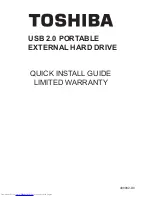
August 15, 2017
© Copyright IBM Corporation, 2017 Page 21 of 117
Creating the Export List File Volume
For the TS7700 to perform a copy export operation, you must first provide it with the information about
which data to export as well as any options to use during the execution of the operation. The information is
provided to the TS7700 through a logical volume. That logical volume can be any of the ones defined for
the TS7700 and is typically selected as a scratch volume by the job that is to create the export list file
volume. The export list file volume is a standard IBM labeled volume that contains three files:
1.
Export List file
2.
Reserved file
3.
Export Status file
All records written to these files are 80 bytes in length and done without compression (make sure you code
your JCL with TRTCH=NOCOMP). The Export List file contains records that tell the TS7700 how to
perform the export operation. The Reserved file is just that, it is reserved for future use, when written it only
contains a single record - a header identifying it as the reserved file. For the Export Status file, the job that
creates the Export List file volume will only write a single record - a header that identifies it as the Export
Status file. During the execution of the copy export operation, the TS7700 will append records to the Export
Status file. On completion of the copy export operation, the Export Status file then provides a record of the
details of the copy export operation.
Like any files you write to a tape, you determine the actual names, decide whether to catalog them, etc..
Note:
It is recommended that the Export List file volumes used for each of the copy export operations
performed be kept because of the Status file information. Alternatively, the Status files could be copied to
DASD or other tapes for long term retention. You should consider how you will retain the status files when
choosing a name for the file.
In a Grid configuration, the export list file volume must only be valid on the TS7700 that is to perform the
copy export operation. To do this, you will need to set up a Management Class name that specifies that only
the TS7700 that will be performing copy exports is to have a copy and then code your ACS routine to assign
that management class name whenever the export list file volume is created for that TS7700.
Note:
See the section on
Grid Considerations for Copy Export
.
You will create the following records for the three files:
Export list file:
The export list file specifies the secondary physical volume pool to export along with options.
The first record of the export list file is the file identifier and version number and must be specified as
illustrated below, starting in the first column:
EXPORT LIST 03
<user field>
Note:
To distinguish copy export from prior VTS generations of export, all export list volumes for copy
export have a version number of 03.
The optional user field is a maximum of 16 characters long, separated with a blank from the version
number.
Following the export list file identifier record is the export parameter record. It is used to specify the pool to
export (in this example it is pool 09). It must be specified as illustrated below, starting in the first column:
















































